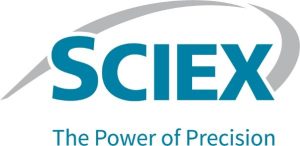Special focus: nitrosamines
The pharmaceutical industry is facing an ongoing issue with genotoxic impurities (GTIs). Since 2018, we have witnessed genotoxic impurities affect several drugs, including those used to treat elevated blood pressure, heartburn and acid reflux. Angiotensin II receptor blockers (including valsartan, losartan and irbesartan), along with ranitidine and nizatidine, were recalled to investigate several potentially cancer-causing substances, called nitrosamines. This issue has resulted in regulatory actions and loss of revenue for the manufacturers.
Amid this crisis, companies are realizing they need to address the wider issue of active pharmaceutical ingredient (APIs) quality for drugs currently on the market. Companies must concern themselves with the accurate identification, quantification and monitoring of impurity levels. They must take a proactive approach to verify the quality of the product and the materials used in the manufacturing.
INFOGRAPHIC
 Infographic: current trends in nitrosamine analysis – This infographic was created upon results from the Bioanalysis Zone survey ‘Current trends in nitrosamine analysis’ [January 2022]. It features opinions and thoughts on nitrosamine contamination sources, the different analytical detection methods and challenges of nitrosamine analysis. In total 177 respondents participated in the survey.
Infographic: current trends in nitrosamine analysis – This infographic was created upon results from the Bioanalysis Zone survey ‘Current trends in nitrosamine analysis’ [January 2022]. It features opinions and thoughts on nitrosamine contamination sources, the different analytical detection methods and challenges of nitrosamine analysis. In total 177 respondents participated in the survey.
WEBINAR
![]() Quantitative determination of N-nitrosamine impurities in API and drug products by LC−MS/MS – The US FDA, Health Canada and other international regulators recommend that API and drug product manufacturers should conduct confirmatory testing using sensitive and appropriately validated methods when there is any risk for the presence of nitrosamine impurities in their products.
Quantitative determination of N-nitrosamine impurities in API and drug products by LC−MS/MS – The US FDA, Health Canada and other international regulators recommend that API and drug product manufacturers should conduct confirmatory testing using sensitive and appropriately validated methods when there is any risk for the presence of nitrosamine impurities in their products.
This presentation will focus on the strategies implemented at Pharmascience Inc. (Montreal, Canada) for the development of highly sensitive and accurate LC−MS/MS analytical methods for the quantitative determination of N-nitrosamine impurities in API and drug products.
[Video edit by Kristian Baycroft-Willmott]
In association with:

